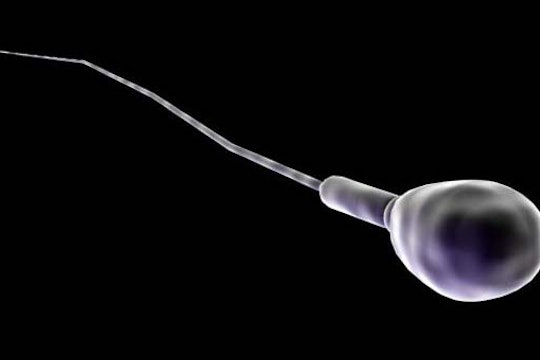
Via Wikimedia
When sperm can’t modify their proteins, their motors stop swimming
New study validates long-suspected biological reason for sperm-based infertility
In our day-to-day lives, we sometimes hear advice about electronic appliances and our body. For example, don't put cell phones in pant pockets or don't use a computer on your lap. With a funny sort of relish, people often leap to suggest that it might, in the long run, affect your fertility.
Sperm is the fundamental biological unit for fertility in people who produce them. They carry genetic information responsible for fertilization. Therefore, any defects in sperm could cause infertility. A 2010 study reported an estimated 48.5 million couples experiencing infertility worldwide, and data from 2015 suggest that at least 30 million people who produce sperm experience infertility. Many are the result of sperm-related infertility worldwide. This makes sense — asthenozoospermia, a infertility condition caused by motility defects in sperm, accounts for more than 80 percent of total cases worldwide.
Sperm motility is absolutely necessary for healthy sperm and fertility. Sperm cell generate motion with their tail's tail, or flagellum. In healthy sperm, the head part contains genetic information and material for fertilization, and thread-like flagella propel the sperm toward the egg.
A study published in January in the journal Science, shows how faulty flagella are a possible cause of infertility. The paper indicates that a specific modifications in flagellum structure can affect a sperm cell's ability to move in the right direction or at the proper speed to reach the egg. The authors propose that this reduced motility and wayfinding ability could lead to infertility.
Flagellum, the motors that propel sperm, are made up of microtubules. These are exactly what they sound like: tiny, tiny tubes — more specifically, tube-shaped structural proteins called tubulin. If a sperm's tail were a skyscraper, then each floor of the building would be microtubules, and further, the steel beams that make up the floors would be tubulin. A specific changed called glycylation happens on the flagellum's tubulin. Glycylation adds short chains of extra amino acids on to the end of a tubulin protein, like adding a little something extra to the end of a steel beam. This glycylation is thought to be of paramount importance for flagellar motor function, but its role in that had been unclear.
In sperm flagellum, tubulin glycylation was suspected to be necessary to keep sperm cells in motion. Any unintended changes to the process of glycylation, therefore, could affect the overall healthy function of sperm.
Researchers showed in this study that tubulin glycylation modification is, in fact, essential for keeping sperm on track and guided towards an egg. The absence or removal of glycylation in flagellum causes reduced movement, and make the sperm defective in this condition. Thus this reduced motility becomes the main reason of the infertility in males.
The reason of this reduced motility, they found, was that sperm lacking tubulin glycylation have flagella that beat asymmetrically and take more time to reach to the egg in females.
In general, normal or symmetrical beating pattern is controlled by the flagellum and responsible for proper beat frequency and amplitude, and waveform like beats. Therefore symmetrical beating pattern in sperms is a sign of healthy condition. To understand the possible reason of this asymmetrical beating pattern, researchers found that, without glycylation, sperm lose the ability to swim in linear or straight direction, which is sign of healthy sperm. They instead swim in circles. Due to this circled or non-linear swimming pattern, sperm show reduced motility, and take longer to reach to the egg.
These reduced motility results causing the infertility were also validated by in vitro fertilization (IVF) analysis in mice. IVF provided more sensitive information about fertility index than in vivo fertilization, confirming the reduced pattern of sperms motility in males.
The work suggests a potential mechanism of infertility due to defects in sperm motility by tubulin glycylation modifications. This process could also help to understand the mechanisms of infertility in humans too. In future, therapies targeting glycylation could provide a better hope for as a solution to infertility diseases in humans.



The study makes a compelling argument that faulty flagella impact fertility in people who produce sperm, specifically due to tubulin glycylation (or more specifically, the lack thereof). Have the authors found any possible root causes of this condition? Thus far, chemicals like BPAs (e.g. hard plastics for food storage and water bottles) and phthalates (found in flexible plastics) have been linked to increasing infertility rates 1 – is there a known connection back to this very concrete mechanism for decreased sperm motility in sperm-producing people?